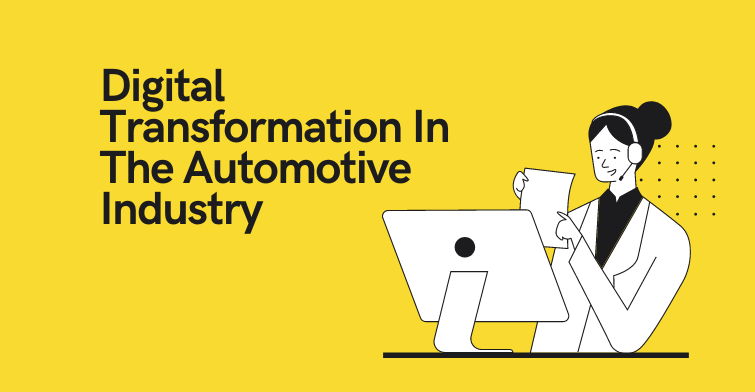Digital Transformation In The Automotive Industry – With the pandemic, the digitalization process of companies has accelerated considerably. What was expected to happen in a few months (or years) has happened quite quickly in the past few weeks.
It was no different from the automotive sector. In this article, we will cover the results and lessons learned from the digital transformation in the car sales process in Covid-19 times.
According to a survey conducted by Neocom Informação Aplicada, 187 dealerships closed their activities this year; more than 60% of closings occurred in the last 60 days. The brands with the highest number of closings were Lifan, Kia, and Hyundai.
Although the pandemic is the main cause of the downturn, physical infrastructure tends to become less relevant for car sales. Conversely, digital channels tend to gain importance in the prospecting and sales process. These are strong, robust, and inevitable trends, whose trajectories for the future have been frantically accelerated by Covid-19, transforming business.
From one day to the next, automakers and dealers were surprised by the immediate need to connect with consumers through digital channels, maintaining interaction without disruption until the completion of the car sales process. This is not a simple equation to be solved.
Adaptations in work processes, which would normally take months, were made in a few days. Technology, logistics, sales, marketing, legal, and accounting teams have worked hard at the automakers and Dealer Groups to get a virtual sales process up and running in record time.
Thus, the pandemic had the merit of promoting digital transformation to the priority status for the automotive sector. We have evolved months, perhaps years, into weeks, but it is necessary to assess the consistency of the advances being made.
Much of the prospecting and digital sales initiatives carried out during the pandemic by automakers and dealers were poorly planned, implemented within tight deadlines, and with severe restrictions on technical and financial resources.
Despite the merits and efforts, the quality of execution of these initiatives has generally been poor, with several operational failures and technical debts. As a consequence, it became common to hear evaluations frustrated by the low effectiveness of the process, a large number of problems, and results below expectations.
For dealers who are now exploring opportunities in the digital world, it is essential to identify execution problems and fix them quickly. In many cases, there will be structures and processes that will need to be redone with greater technical precision and maturity in order to achieve the expected results.
The digitization of sales is an inevitable trend, driven by the genuine desire of the consumer for less effort, less cost, greater efficiency, and transparency in the acquisition of cars, services, and parts.
The digital transformation is underway and will impact all concessionaires, from small to large, located in the capitals or in the interior, requiring the modernization of their structures, technology, processes, and the profile of the sales teams.
The adaptation needs, which took force during the pandemic, will continue for a long time until the necessary alignment between the physical and virtual channels.
The ability to process data, identify potential buyers, and activate sales through digital tools will be a basic capability of the “Concessionaire of the Future”.
The internet is already the main and most strategic ‘locus’ of the car buying journey and, soon, technologies such as car connectivity will offer new opportunities in this complex digital ecosystem.
Modernization of concessionaires
In response to this movement, the physical infrastructure of the distribution network should also evolve in search of cost reduction and greater efficiency, with the incorporation of technologies in the showroom, reduction of store sizes, diversification of formats, and adoption of new business models. in partnership with automakers, such as rental services, for example.
The adoption of technologies such as digital displays and high-resolution screens in physical stores, in addition to providing greater quality in product demonstrations, also make smaller stores viable, as vehicle exhibition spaces will be replaced by equipment for virtual product presentation.
Following are the main technologies used to modernize the concessionaires:
| Technology | Functionalities |
| Smart Cameras | · Record store traffic and allow, through images, the count of people passing
through each area, signaling the most and least visited points; · Recognize gender and approximate age patterns, qualifying traffic statistics; · They recognize facial patterns of ‘satisfaction’ or ‘dissatisfaction’ of people, · Identify people who have photos registered in the store’s database, through |
| Service Panels | · Make available, from a CPF or other personal identifier, the records of interactions that the customer has already made with the brand during the purchase journey and their preferences, providing the continuity of the sales the process with a minimum of disruptions between the physical and virtual;· Allow customers to ‘assemble their own car’ with hundreds of customization options; or even, retrieve a customized simulation already carried out over the internet;· Allow the presentation of the vehicle’s characteristics to the customer, in a virtual environment, with a wealth of images, details, and information; · Allow the comparison of characteristics between two or more models, facilitating the customer’s decision process; · Allow data to be sent to the customer via email or messages. |
| Virtual reality | · Allow the exploration, in 3D images, of the characteristics of each model, in its different finishes and versions. |
| Sensory Panels | · Allow the customer to touch and see samples of finishes, materials and colors used in all vehicles of the brand. |
The future has arrived and it is no exaggeration to say that a new era for the automotive sector started in 2020!
